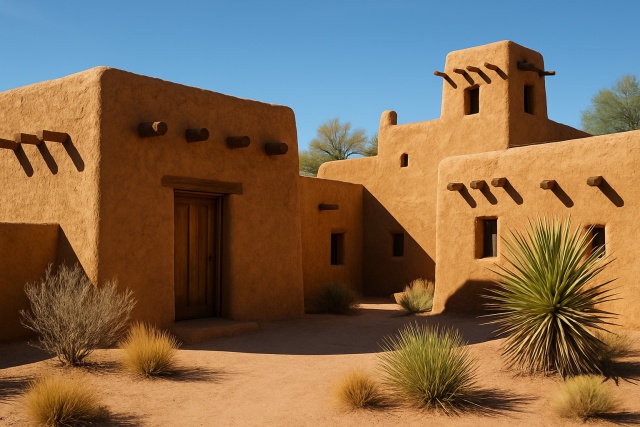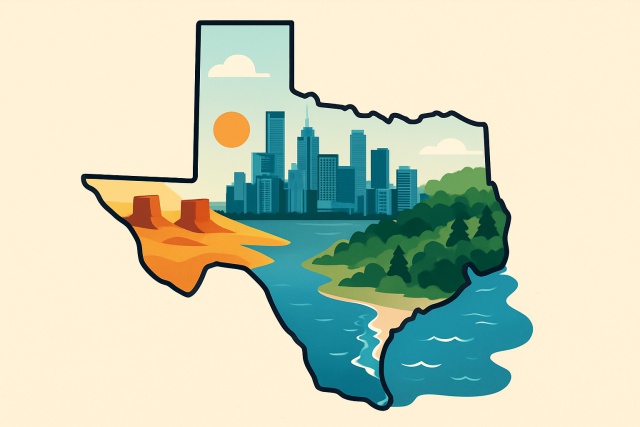What Bison Reservoir Artifacts Tell Us About Ancient Life
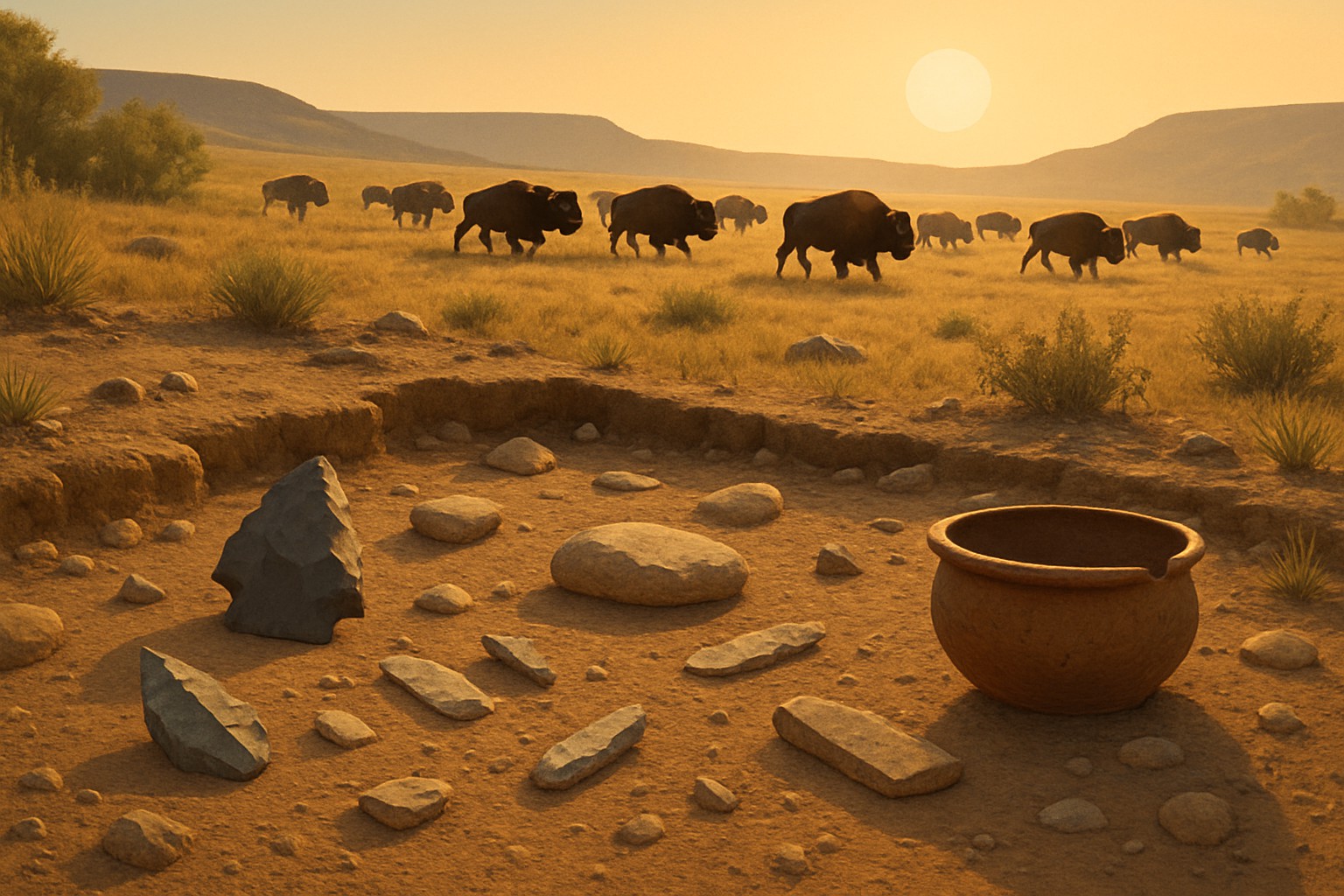
Artifacts uncovered at the Bison Reservoir site paint a fascinating picture of ancient life and show how closely early humans were connected to their surroundings. These discoveries do more than sit quietly in a display case. They tell vivid stories of cultures that once thrived here and reveal their survival tactics, social bonds, and interactions with the environment—especially the massive bison herds central to their daily lives. By carefully studying these artifacts, archaeologists can piece together how these communities hunted, crafted tools, and adapted to the challenges they faced.
Introducing the Bison Reservoir with Its Location and History
The Bison Reservoir rests in a patch of rolling plains and winding river valleys, where sedimentary rock formations have done a pretty impressive job of preserving archaeological layers in near-perfect condition.
Uncovering and Excavating Artifacts at Bison Reservoir A Hands-On Journey into the Past
The Bison Reservoir artifacts first popped up during a string of exploratory digs in the early 20th century sparked by the boom in nearby farming. Excavators rolled up their sleeves and relied on stratigraphic excavation methods paired with painstaking screening to make sure even the tiniest or most delicate items didn’t slip through the cracks. The whole process was far from straightforward, thanks to hurdles like disturbed sediment layers and the ever-shifting water table.
A Curious Mix of Artifacts Unearthed at the Bison Reservoir
- Stone tools like scrapers, projectile points and blades were trusty sidekicks for hunting and working animal hides
- Pottery shards offer windows into how food was stored and prepared and tell stories of daily life
- Bone and antler tools carefully crafted into needles, fishhooks and other handy items show real ingenuity
- Fossilized bison remains reveal how hunting and butchering were done like a prehistoric how-to guide
- Decorative objects such as beads and carved pendants go beyond decoration and hint at deeper aesthetic and symbolic meanings
- Hearth remains speak volumes about controlled fire use and the warmth of shared living spaces where stories and meals were probably exchanged
Each type of artifact offers a unique window into the past painting a picture as rich as it is varied. Stone tools reveal how early technology evolved to craft tough, reliable hunting gear—nothing fancy just good old practicality. Pottery shards hint at blossoming culinary skills and the comforts of a more settled lifestyle as if someone finally decided that sitting down to eat was better than eating on the run. Bone tools showcase a clever use of whatever nature provided and a surprising finesse in handiwork that is pretty impressive. Then there are the bison remains which help us piece together diets and seasonal habits like following a trail of crumbs through time. Decorative objects whisper stories of cultural meanings and maybe even spiritual beliefs, adding a touch of mystery to the mix.
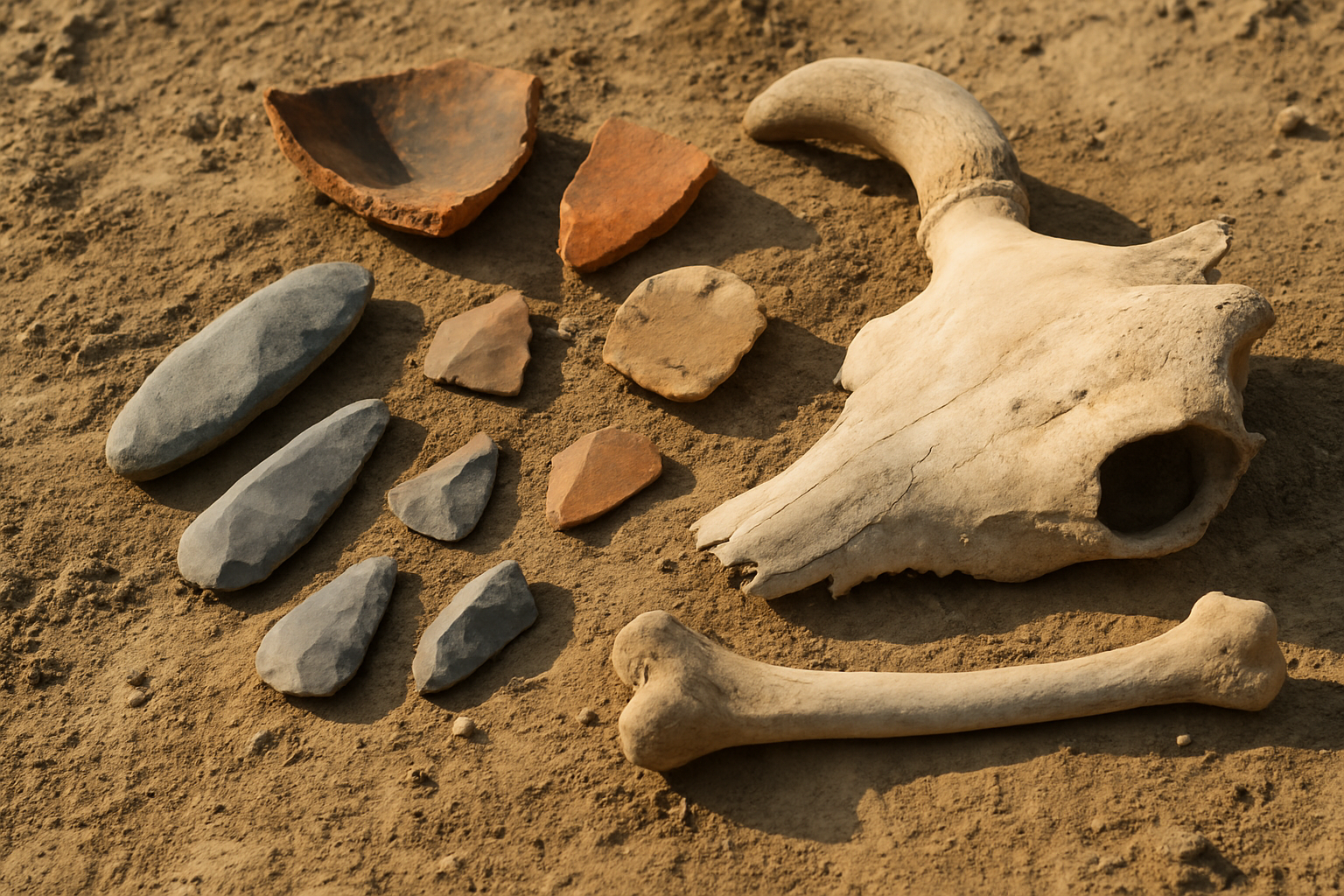
Selection of artifacts uncovered from the Bison Reservoir site including stone tools, pottery shards, and bison fossilized bones.
Insights the Artifacts Provide Into the Day-to-Day of Ancient Humans
These artifacts provide a fascinating window into a complex society that excelled at hunting large bison herds and made impressive strides in food processing, clothing production and nurturing social bonds. They reveal much more than mere survival tactics—these objects speak to rich cultural traditions and shared wisdom that were important for holding the community together and managing resources with surprising finesse.
Archaeological finds reveal surprisingly sophisticated hunting methods like guiding bison into natural traps or ambush spots to tilt the odds during the hunt.
Tiny tool marks tell the story of a careful step-by-step crafting process—flaking, shaping and sharpening stone and bone tools with a practiced hand.
Layers of deposits from different seasons suggest the site was not a random pit stop but was used at specific times of the year likely timed with the bison's migration patterns.
Some artifacts including exotic beads and materials from far-off places point toward trade routes or cultural exchanges beyond the local neighborhood.
Certain decorative or unusual objects hint at ritual use, suggesting the site held symbolic meaning—it wasn’t just about survival but something deeper and more meaningful.
"At Bison Reservoir, the tight-knit connection between stone tools, animal remains, and decorative artifacts paints a pretty vivid picture of how ancient people went about their daily lives. It also hints at how they probably saw their surroundings and social roles as not just linked, but woven tightly into the very fabric of their everyday existence." — Dr. Emily Harding, Archaeologist specializing in Paleoindian cultures
Environmental and Ecological Insights We’ve Unearthed from Bison Reservoir Discoveries
Carefully examining fossilized plant remains and animal bones found alongside human artifacts helps researchers piece together a snapshot of an ancient ecosystem. It was largely sprawling grasslands with massive herds of bison. A close look at pollen, seeds and tiny insect remnants mixed with animal evidence sheds light on shifts in climate, vegetation patterns and food sources that shaped how humans lived in the area.
| Artifact Type | Associated Flora & Fauna | Estimated Date | Climate Conditions |
|---|---|---|---|
| Stone Tools | Local grasses, bison | 8,000 - 7,000 BCE | Warming up nicely after the last ice age, with open plains stretching far and wide |
| Pottery Fragments | Wild plants and seeds | 6,500 - 5,500 BCE | Mild weather that brought those reliable seasonal rains—a gardener’s delight |
| Bone & Antler Implements | Bison, small game mammals | 7,500 - 6,000 BCE | On the move from chilly times toward more comfortable, temperate conditions |
| Bison Fossil Remains | Grassland herbaceous species | 8,000 - 6,000 BCE | Prairies growing strong, creating a perfect backdrop for roaming herds |
| Decorative Items | Rare mineral pigments, plants | 7,000 - 5,000 BCE | A steady, resource-rich environment that must have inspired some pretty creative individuals |
| Hearth Remains | Charred wood, seeds | 8,000 - 5,000 BCE | Changing climates kept things lively, with active fire use adding warmth and flavor |
Environmental conditions really shaped how people settled down and carved out their livelihoods. With bison roaming plentifully hunting quickly became a go-to way of life while a variety of plants offered backup on the food front. When the climate warmed up after the Ice Age people switched their tools and shifted their living spots showing how tightly humans and their surroundings have always been linked.
Frequent Misunderstandings About Artifacts in Bison Reservoirs What People Often Get Wrong
There are some common myths floating around about the Bison Reservoir site, like the notion that every single artifact was used solely for ceremonial purposes or that the ancient inhabitants lived in total isolation from everyone else. If you take a closer look, the evidence actually tells a different story. One where the artifacts had all sorts of practical uses and where these individuals were clearly rubbing elbows with nearby communities.
- Artifacts were long thought to be solely for ritual use though many had practical everyday roles too—proving these objects were more than just ceremonial showpieces.
- Bison were often viewed as hunted purely for sport even though they provided vital food and materials—so much for hunting just for fun.
- The site has been described as merely a temporary camp. Evidence of repeated visits during certain seasons tells a different story and hints at a rhythm of life that’s more complex.
- Some claim the artifacts show no sign of trade or contact with other groups but the material findings tell a more tangled tale clashing with that tidy assumption.
- Artifacts remain exactly as they were when first deposited overlooking how natural decay and change tend to remix the story over time.
Ways Modern Technology Gives Us a Deeper Look into the Site
Technological advances like radiocarbon dating have truly nailed down artifact ages with impressive precision. 3D scanning and digital modeling give us a detailed look at tool wear and the crafty ways they were made. DNA analysis of bone remains and sediments digs up clues about species variety and diet and disease patterns, adding rich layers of insight.
Working side by side across fields like archaeology, geology, biology and materials science makes a world of difference in painting a well-rounded picture of life at Bison Reservoir. Bringing these diverse areas of expertise together allows research to piece together the environmental context and human activity with a level of detail we have not seen until now
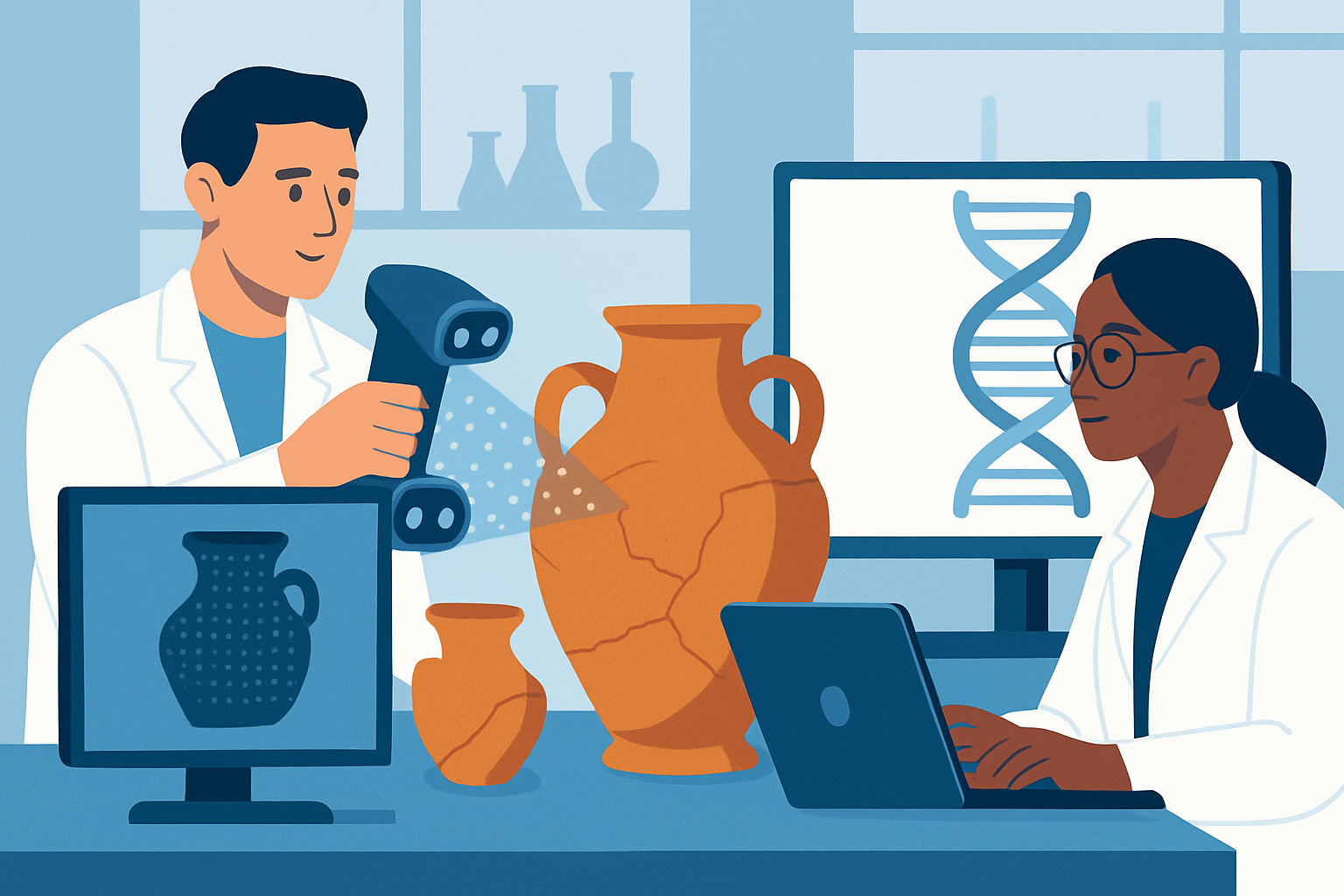
Researchers employing cutting-edge 3D scanning and DNA sequencing to study Bison Reservoir artifacts.
The Ongoing Significance of Bison Reservoir Artifacts
It's fascinating how these artifacts continue to tell their stories, standing the test of time. They do not just sit quietly in history; they actively bridge our past and present in ways that still surprise and intrigue scholars and enthusiasts alike.
The Bison Reservoir artifacts offer a fascinating window into our shared human story, revealing just how early communities not only adapted to but also shaped the world around them. Digging into and preserving these remnants doesn’t just deepen our cultural roots—it also lights the way for how we handle resources in today’s fast-changing world.


